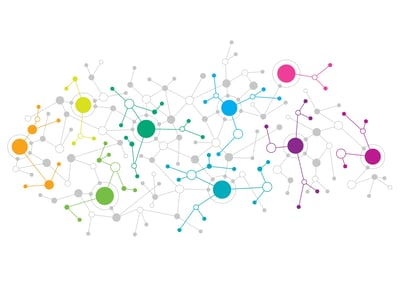In the time before online search engines like PubMed, Google Scholar, and Scopus, how did researchers go about finding and accessing peer-reviewed journal articles? A scientist from MD Anderson told me that in the early days of his career, he and his colleagues relied on a weekly print publication called Current Contents—which at the time, consisted of the title pages of several hundred scientific journals. They would scour the publication in search of potentially relevant articles, and then send out reprint requests to the authors whose papers interested them. Upon receiving the request, the authors would send them the reprints by mail.
As you can imagine, the end-to-end literature acquisition process took an enormous amount of time.
Today, of course, scientists can discover and access scholarly papers a whole lot faster—thanks to the Internet and digital technologies. It should be noted that Current Contents is still around and available in print but has been largely transformed into the Clarivate Analytics online database.
The history of scientific literature acquisition, however, goes back far beyond PubMed and Current Contents.
In this post, we’ll take a close look at how the transformation of scholarly literature acquisition came about, and what the landscape of document delivery looks like today.
The Early Days of Scholarly Literature Delivery
The history surrounding scholarly literature supply dates back thousands of years. In the time of the Islamic Empire, libraries and mosques served as centers of learning in cities such as Cairo, Baghdad, and Damascus. Because shipping actual manuscripts to recipients was costly and risked loss or damage, scribes took to copying manuscripts for delivery instead of sending the originals.
These handwritten copies took time and labor to produce, and often didn’t maintain the same quality or legibility as the original manuscript. As new methods for typewriting and copying became available in the 1800s, these became more practical and efficient. The British Museum and the Bibliothèque Nationale maintained dark rooms and equipment that visiting scholars could use to make copies of manuscripts.
The Rise of Offprints
For readers who didn’t have access to photocopy equipment or didn’t want to copy a manuscript by hand, requesting an “offprint” directly from the author was a frequent alternative. An offprint was a separate printing of an article that had already been published in a magazine, journal, or another edited anthology.
Readers could gain access to images, tables, and scientific formulae that would be tedious to copy by hand, while authors would benefit from wider distribution of their manuscript, especially if the original journal was no longer in print.
Offprints, which were also referred to as “reprints” and “author’s copy” in the 1800s, soon became collector’s items, and served as an opportunity for scholars to correspond with each other. In some time periods, they could be published more quickly than bound manuscripts and allowed for faster dissemination of research and ideas.
According to the University of St. Andrews, the cost of separate copies was paid for by the author. Requests had to be made “promptly” to coincide with the original print run of the journal and were made through a “private arrangement” with the printer. A journal’s publisher, however, could limit the number of offprints to around 100 per article.
Ultimately, these practices gave rise to private correspondence networks that facilitated the distribution of scientific knowledge—not unlike today’s social media networks where scholarly authors can share preprint versions of their works.
20th Century Research Distribution Methods
In the early 1900s, advances in technology made it easier for academic libraries and research institutions to make copies of printed work. This included a photoduplication process invented in France and the Photostat process developed in the U.S.
However, because these were only rolled out at a small scale due to their cost, they didn’t have a large effect on the distribution process.
Printing “separate copies” remained an established practice, and even supplanted the journal as the primary print run for some publications. In the 1930s, the world’s oldest scientific journal, the Philosophical Transactions of the Royal Society, stopped printing annual bound volumes so as to focus on offprints instead.
From Hard Copies to PDF Journal Articles
The biggest change to document delivery methods occurred later in the 20th century, when the rise of the Internet made printed copies less of a necessity—and made it easier for scholars to collaborate internationally.
The first major provider of digital research papers was The University Licensing Project (TULIP), which launched in 1992 and connected eight universities in the U.S. In 1998, the soon-to-be founders of Google, Sergey Brin and Lawrence Page, took the concept one step further with their idea for a “a large-scale hypertextual Web search engine,” published in the Computer Networks and ISDN Systems journal.
Within a few years, over 11 million articles and ebooks had been made available in a digital format. And by 2010, they represented a bigger share of the academic content market than hard copy publications.
Document Delivery Today
The shift to digital document delivery has made it easier than ever to access scholarly journals online—but it can still be a time-consuming and expensive process. Searching for relevant content and maintaining multiple journal subscriptions can be a barrier to entry for many scholars with time and budget constraints.
Research Solutions has been working to modernize the industry since its founding by Peter Derycz in 2006 as Reprints Desk, which initially focused on hard-copy medical reprints. Indeed, many of our company’s executive management team gained early experience in the photocopying business—back in the pre-digital, reprints era. Today, our cloud-based SaaS platform, Article Galaxy, functions as a content discovery, retrieval, and management platform, supplying researchers with full-text PDF articles on demand.
Research Solutions has long been an innovator in content retrieval and a pioneer in providing cloud-based workflow solutions for R&D driven organizations.



